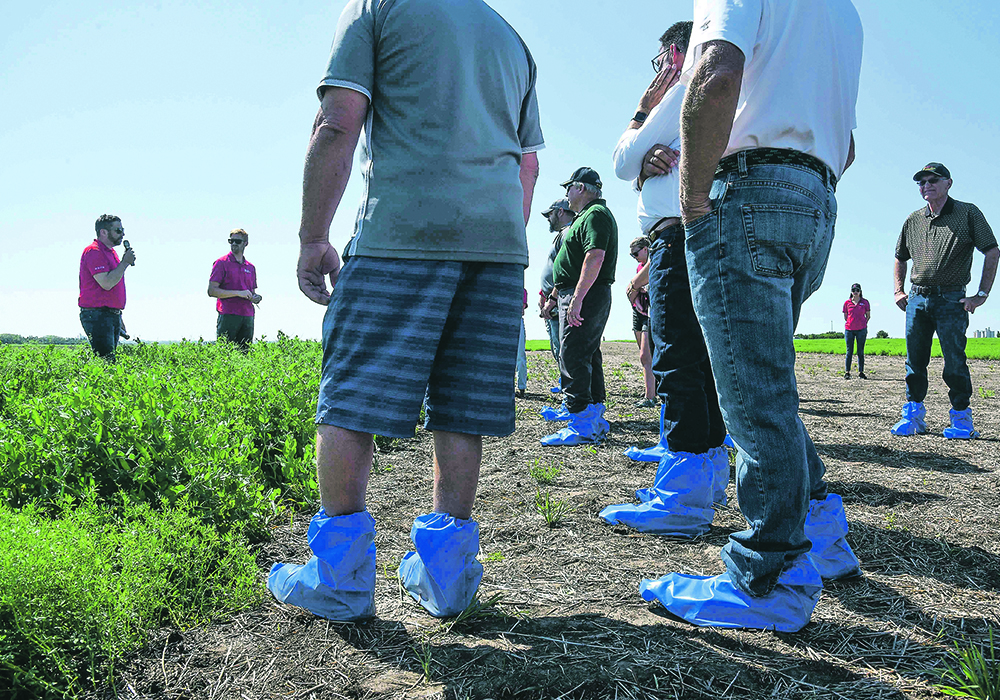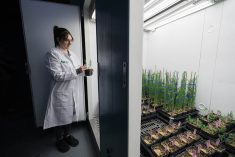Partnership with Limagrain Field Seeds is expected to work on herbicide tolerance, disease, protein content and yields
A new future is possible for pulse breeding in Saskatchewan, industry officials say.
Saskatchewan Pulse Growers and Limagrain Field Seeds last week announced a collaboration to develop better performing varieties of peas and lentils.
The major areas of focus include herbicide tolerance levels in lentils, resistance to root disease in peas and lentils, increased protein content and overall improvements in yield performance under varying conditions.
Determining the breeding priorities is one of the most important parts of the alliance, said Jason Reinheimer, head of cereal and pulse research with Limagrain.
Read Also

Phosphate prices to remain high
Phosphate prices are expected to remain elevated, according to Mosaic’s president.
“The beauty of this collaboration is that we have Saskatchewan Pulse Growers helping direct what our priorities are. This is exciting because the farmers’ needs, the farmers’ wants, get fed to us live and we’re able to deliver, prioritize and react, invest, take risks if needed to deliver on the priorities of Saskatchewan growers,” he said during a Saskatoon news conference.
“Limagrain has a strong focus on farmers as well. They have commercial focus and really have an eye on the traits that are most important to growers. Getting varieties in the hands of farmers quickly is a key priority and is one of those other factors that really attracted us to Limagrain as a partner,” added Carl Potts, executive director of SPG.
The program is based in Saskatoon, where a pulse breeding team has already started to bring expertise in breeding, pathology, molecular genetics and field trial evaluation to the region.
Besides higher performing varieties, the technology driven program is expected to help shorten the breeding cycle and accelerate seed production.
SPG had a breeding agreement with the University of Saskatchewan’s Crop Development Centre for some 20 years and it came up for renewal about two years ago.
“The CDC opted to not renew that agreement and indicated that they were looking for different models and different funding partners. So, at that time, we started searching ourselves for other partners to collaborate with,” said Shaun Dyrland, SPG board chair.
Added Reinheimer, “it’s always important before you start answering any discussions that you set the common ground. We’re both farmer-directed and we’re farmer-owned, so we established quite quickly that we’re very similar in terms of our values and our objectives.”
The agreement is a new model for breeding partnerships for pulse crops in Saskatchewan. It moves away from the single breeder, royalty-free model to a royalty-based system to fund plant breeding and get a return on investment.
“This is an important step for Saskatchewan growers and for Western Canada, to move to this new system where it encourages investment by not just us but by other organizations to come to Western Canada to spend their dollars on research and investment into variety delivery for the benefit of Saskatchewan and western Canadian growers,” said Reinheimer.
SPG and Limagrain will contribute about equal amounts to the collaboration.
“We both contribute funds to the breeding program and support the research and that will continue into the long-term future. We are expecting to be able to earn revenue through royalties on varieties that we release. Those funds will be reinvested back into the breeding program,” Reinheimer said.
“From SPG’s perspective, we’ll be investing about $850,000 per year on average over this first (six-year) term of the agreement,” said Potts.
The collaboration is expected to bring additional investment into pea and lentil breeding in Saskatchewan.
















